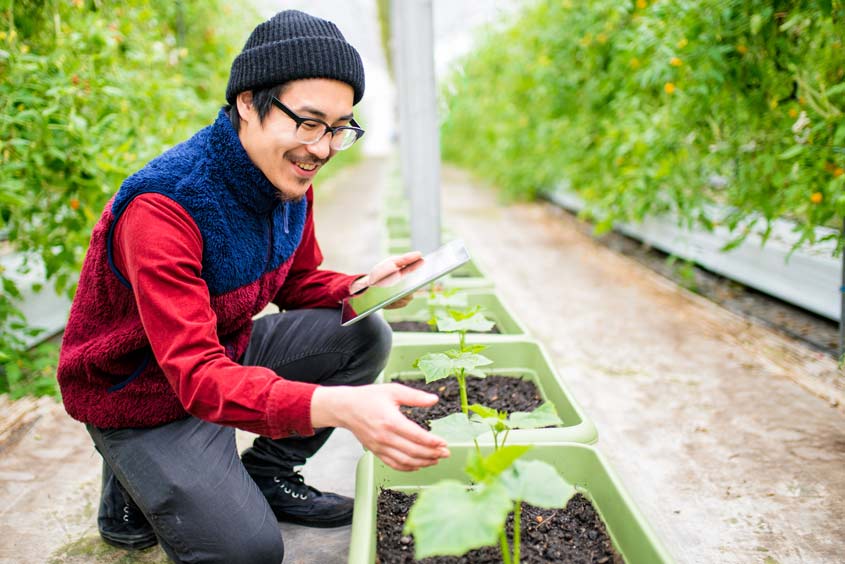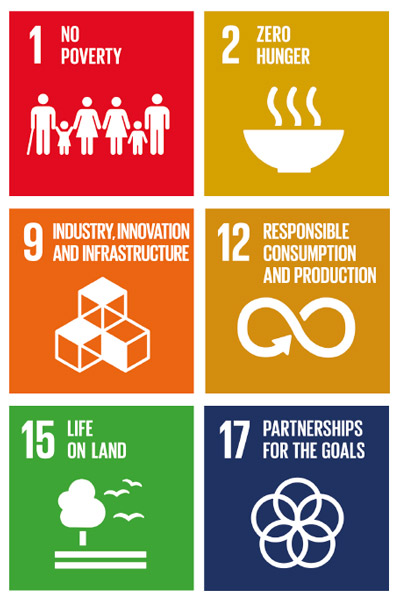By Benjamin Rivoire, International Union for the Protection of New Varieties of Plants (UPOV) and Catherine Jewell, Communications Division, WIPO
Supporting the development of new varieties of plants is an essential response to achieving food security and agricultural sustainability, especially in a context of climate change and global population growth.

The vision set out in the 2030 Agenda for Sustainable Development foresees a world where “food is sufficient, safe, affordable and nutritious”; where “economic growth, social development, environmental protection and the eradication of poverty and hunger” are “sustained and inclusive;” and where the technologies we develop are “resilient, climate-sensitive, and respect biodiversity.”
Breeding new varieties of plants that fulfill these technological criteria is an important part of translating sustainable development into reality and is particularly challenging in a context where productive agricultural land is limited, urbanization is gathering pace, parallel demands on food and energy production are rising, and human needs are evolving as a result of environmental change. How then do we encourage the development of these new varieties of plants?
This is where UPOV, the International Union for the Protection of New Varieties of Plants (see box) has an important role to play. UPOV provides a system that enables plant breeders to protect their innovations and obtain a return on their investment in developing varieties that meet the needs of farmers and consumers. This, in turn, encourages them to continue investing in their plant breeding programs. UPOV supports the plant breeding landscape by enabling a diverse range of breeders and breeding programs to thrive, while also ensuring that the latest developments in plant breeding are available to farmers and growers around the world. The effective use of plant breeders’ rights under the UPOV system can help translate the goals laid out in the 2030 Agenda for Sustainable Development into reality.
Progress in agricultural productivity
Over the past 50 years, we have seen tremendous progress in agricultural productivity in many regions of the world. To a large extent, the use of improved plant varieties and application of modern farming practices have been responsible for the increased efficiency of agricultural systems. Future food security hinges on improvements in these areas, especially in the face of expected changes in global demographics. The world’s population is projected to rise from around 7.6 billion today to 9.8 billion by 2050 and will become ever more urban. These factors, coupled with the challenges thrown up by climate change, underline the need to continue to develop ways to boost the productivity and the sustainability of global agriculture.
About UPOV
The International Union for the Protection of New Varieties of Plants (UPOV) administers an international system of intellectual property (IP) rights that protect plant breeders’ rights and encourage innovation in agriculture through the development of new varieties of plants. UPOV is an intergovernmental organization based in Geneva, Switzerland. To date, it has 75 members covering 94 countries).
If we are to succeed in further boosting yields and product quality in agriculture, horticulture and forestry, while minimizing pressure on the natural environment, we need to encourage the development of plant varieties that are high-yielding, pest- and disease-resistant, salt- and drought-tolerant, and generally better adapted to climatic stress. We also need to ensure that the process by which plant breeders can obtain protection for the new varieties they develop is user-friendly, cost- and time-efficient.
Plant variety protection made easier
When a country joins UPOV, it benefits from support in establishing its domestic plant variety protection (PVP) system and can take advantage of opportunities to collaborate with international partners. Membership of UPOV helps ensure that plant variety protection extends to the widest range of plant genera and species for maximum economic, social and environmental benefit (see the UPOV Report on the Impact of Plant Variety Protection).

A multilingual online tool that saves plant breeders time and money.
To obtain protection for a new variety, breeders need to file individual applications with the PVP Offices of the UPOV members in which they are seeking protection. That rather cumbersome administrative process has been made significantly easier with the launch of UPOV PRISMA, a multilingual online tool that saves plant breeders time and money.
Advantages of UPOV PRISMA
UPOV PRISMA is a reliable, user-friendly and smart way for breeders to protect their new varieties in different target markets – and ensure that farmers have access to the best and most suitable varieties. Its multilingual interface (Chinese, English, French, German, Japanese, Korean, Spanish, Turkish and Vietnamese) enhances usability for breeders around the world. Users can access the most up-to-date application forms of participating UPOV members.
A variety of time-saving functionalities make it easier for them to complete and submit their PVP applications in line with the formal requirements of different PVP Offices around the world. For example, if a breeder in Costa Rica wishes to submit a PVP application in Colombia and then decides to submit a second application elsewhere, much of the information contained in the initial application will automatically appear in the second application.

UPOV PRISMA’s automatic translation functionalities also make the application process easier. For example, a breeder from the Republic of Moldova who submits an application to protect a variety of soya bean in Chile simply selects the English interface to complete the application. Salient parts of that application will automatically be translated into Spanish as required by the PVP Office in Chile. Users can be sure they are completing their PVP application correctly as they have access to drop down lists pre-filled with technical information. This enables them to easily select relevant information in the required format. In most cases, breeders need only provide translations for free text, which represent a limited part of the application.
UPOV PRISMA is a collaborative platform that enables different parts of the application process to be assigned to different members of a team. For example, one person may be responsible for creating the breeder account, while others are responsible for completing the application form, submitting data and paying the relevant fees online via a secured interface. Of course, in smaller operations the whole process may be handled by one person.
The tool also makes finding a local representative/agent easy. When breeders need a local representative in a country to manage the application procedure or specific parts of it, UPOV PRISMA makes it easier for them to find the help they need. Agents can register their details on UPOV PRISMA so users can contact them easily if and when they need for their services. UPOV PRISMA also allows breeders to monitor and track the progress of their applications around the world.
The tool offers significant advantages to UPOV Members, especially those who have not yet developed their own online PVP application platform. UPOV PRISMA saves them time and resources because they can use it as their national system.
So far, 28 countries as well as the Community Plant Variety Office of the European Union (CPVO) and the African Intellectual Property Organization (OAPI) have signed up to UPOV PRISMA. Twenty of the 30 participating PVP offices offer the possibility of submitting application data for all genera and species. Others will do so in the near future.
UPOV PRISMA is available free of charge until December 2019.
More information about the platform is available on the UPOV PRISMA website. Otherwise, send enquiries to prisma@upov.int.
Relevance of the UPOV system to the United Nations Sustainable Development Goals
| Goal 1 | End poverty in all its forms everywhere |
| Goal 2 | End hunger, achieve food security and improved nutrition and promote sustainable agriculture |
| Goal 9 | Build resilient infrastructure, promote inclusive and sustainable industrialization and foster innovation |
| Goal 12 | Ensure sustainable consumption and production patterns |
| Goal 15 | Protect, restore and promote sustainable use of terrestrial ecosystems, sustainably manage forests, combat desertification, and halt and reverse land degradation and halt biodiversity loss |
| Goal 17 | Strengthen the means of implementation and revitalize the global partnership for sustainable development: Systemic issues: Multi-stakeholder partnerships |


